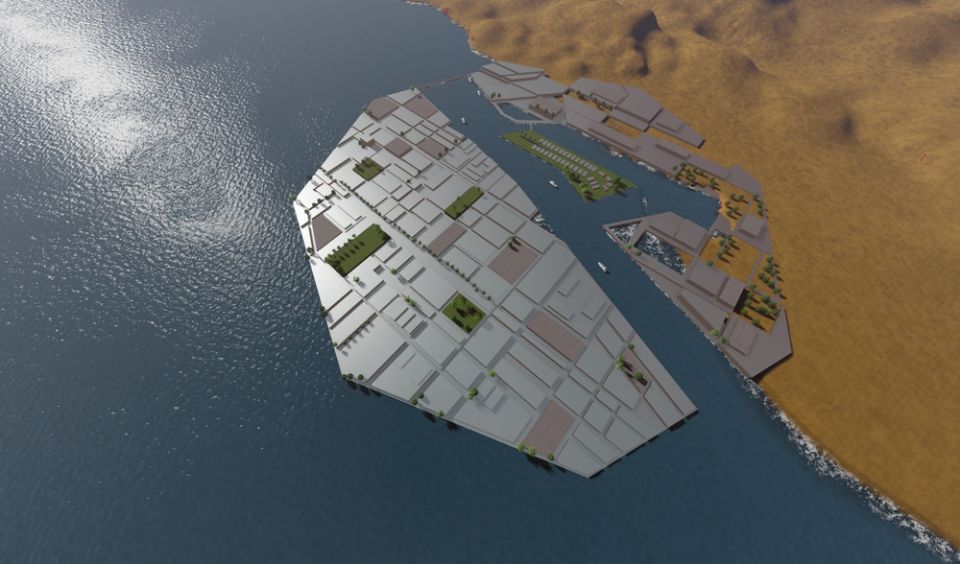
From Idea to Launch: A Step-by-Step Guide to Starting Your Startup
September 29, 2023
Understanding Financial Management: 5 Tips for Entrepreneurs to Stay Profitable
September 29, 2023Do you know the focus spans of individuals in the present-day dynamic of the digital age are thinner than ever?
With ample knowledge at our disposal, corporations are constantly on the hunt for novel unconventional ways to generate interest in the demographic they are targeting. Right here resides the powerful impact of visual content.
Visual content is a potent tool that allows companies to interact with consumers and encourage development. It can arrive in numerous forms, from engaging videos and photos to infographics and animations. Although according to data, the greatest issue for 23.7% of content marketers is creating visually appealing content. Infographics, in particular, are a powerful method for visual content, being responsible for as much as 78% of retention. Want to learn the 5 ways to use infographics to create captivating content? Let’s dive right into the blog!
5 Ways to Use Infographics to Create Captivating Content
Define your Goal:
The first step to creating anything, including visual content, is to set your goals.
Infographics consist of color, and good appeal, which proves helpful in garnering attention. Customers are 55% more likely to comprehend and accept content if it’s in color, rather than black and white. It is vital to determine an infographic’s aim and primary objective before commencing the designing procedure.
You should devote a little bit of time to consider precisely what you would like the infographic to illustrate. Determine what particulars or insights you are trying to get through to your target audience.
This stage is important because it will influence the infographic’s layout while also making sure the intended message is portrayed properly in the final version.
For example, if your goal is to explain a certain process through infographics, the first thing you would take is highlighting which steps you should take and in what order the events would take place. Consider thinking about which visual components would be most suitable to illustrate each step you will take and aid in portraying the best understanding of that process.
Hence, by setting a goal for your infographic, it becomes clearer what way would be most suitable to achieve that goal through visual content while also making the procedure more captivating and engaging. Compared to articles with the same content, infographics are 30 times more likely to be read.
Similarly, you can use infographics to achieve other goals, such as:
- Comparing data
- Showcasing a trend
- Raising awareness about something
- Comparing features of various products
Know Your Audience
Collecting an audience is a large part of any successful content service. An essential technique for creating captivating visual content material online is to know your audience.
Knowing that consumers spend an average of 8.5 minutes seeing static content items while 13 minutes browsing interactive content items, shows that interactive content has 52.6% greater interaction than static material. We also need to assess this on an individual level. What’s more is that when an infographic is shown, 45% of online viewers are likely to press on it and view it.
It’s critical to create content that speaks to them on a personal level by thoroughly studying their likes and dislikes. By analyzing this data, you can tailor your content in such a way that it connects with them individually, addresses their problems, and boosts engagement.
Let’s delve into how you can get to know your audience:
- Identify and study your audience: Explore the demographics, preferences, hobbies, and interests of your audience, be it their age group, location, what they like or dislike, etc.
- Specify their interests: Investigate and specify what topics excite your audience the most, what sort of problems they care about the most, what bothers them, gets them emotional, etc. This will help you determine what type of content you can base your infographics on.
- Personalize the content: Customize your infographics to include a sense of individuality whenever you can to make your content more influential and so that your audience can feel more familiar with it. You can utilize case studies, real-life examples, testimonials, etc.
- Include visuals that resonate: It’s important to use visuals relevant to the content you are basing your infographic on and use visuals that entice your audience and align with their preferences and backgrounds on a certain level.
- Assess and collect feedback: After creating your infographic, you can assess how well it is by initially testing it out on a small group of people and then collecting feedback from that group. You should then reflect on that feedback to see what works best and what changes you need to make.
Knowing your audience can help you out a lot in creating the best infographics, which can help your brand a lot. When it comes to using infographics as a content strategy, 60% of businesses have adopted this method.
Keep It Simple
One of the things to remember when it comes to creating infographics is that it is best to keep it simple.
Irrelevant elements and hoarding several things in an infographic can come off as too strong and repulsive for your target audience, so it is something to be mindful of. Here are some ways you can create simple infographics:
- Stick to relevant, authentic data and make the most of data points, facts, or step-by-step guides. Keep information precise and to the point.
- To capture the attention of your audience, it may be a good idea to adapt a unique visual framework. This can consist of experimenting with the vital parts of your content, such as using bolder fonts, more robust colors, or notable positioning. Be mindful of arranging the relevant content in an organized manner so that everything looks effortless and smooth.
- You should also be cautious about using it short and precise. Using big words is not always a good idea since it may confuse your audience. Therefore, it’s good to keep your language and tone simple as well. Precise, yet informational visuals are preferred by about 67% of people.
- Moreover, when selecting which visuals to include in your infographic, you should choose something simple and tidy-looking. Highly detailed pictures and backgrounds can make your content seem pretty unappealing to your audience and distract them from really understanding what message you are attempting to convey.
- In addition, it’s best to leave whitespace and breathing room when creating your infographic. This avoids making your content seem cluttered and confusing, but rather it aids in better focusing on the relevant information and looks nice and tidy.
Tell A Story
When designing an infographic, it’s essential to organize the data in an organized manner that effortlessly carries the viewer along with the content. Infographic usage has increased the most among B2B marketers in the past four years and is currently at 67%.
Every aspect of the infographic ought to move nicely from one point to the other in a concise manner for the infographic to deliver a rousing and captivating narrative. You can do so by:
- First, start by specifying a set topic or theme for the infographic so that they can determine what steps they should take next and what details they need to add along the way– all in an organized manner.
- One way of achieving this is by adopting a storytelling format. See, when you tell a story, you start with an introduction, then you begin the body of your story containing all the main information, and lastly, you conclude. Similarly, you can use this format in your infographic to convey all the needed information and message as you wish.
- Start with the introduction of your infographic. In a short, precise, and attention-grabbing manner, you should let your audience know what they should be looking forward to seeing and finding out in your infographic and what your message is.
- Moving along from the introduction, start portraying your data in an organized, well-thought-out manner. Your audience should be able to connect the dots as you move from one topic to another smoothly. This keeps them interested and engaged.
- It’s always a good idea to use illustrations in your infographic to describe your content. This could include graphs, diagrams, pie charts, or even pictures and videos. As long as you present it aesthetically and practically, all is well. After all, statistics show that 50% of customers are able to, and even prefer to, focus more on content that includes images.
- As you draw closer to the conclusion, you should end your infographic with a summary of all the key points and the main message of your infographic to ensure clarity among your audience.
Through this method, you can create an infographic showcasing your content as if you’re telling a story. According to a survey, website traffic has increased by 12% for websites using infographics.
Remember that while creating content, always maintain a uniform and coherent style of design and color palette. Also, after you are done designing your infographic, you should always proofread everything and make the necessary edits wherever needed. This method can aid in increasing website traffic quite well.
Promote and Share Your Work:
After you have completed all the necessary steps in creating your ideal infographic, the last thing you need to do is promote and share your work.
You should launch your work on all the relevant platforms, be it your social media accounts, sharing it with your email list for email marketing, or sharing it on your website to reach a wider range of audience.
Social media is a very popular option for promoting your work. 97% of online consumers are reported to have accessed social media at least once a month. Hence, it’s a good option to share and advertise your work. Some popular social media platforms you can share and promote your infographics are :
You can even adopt email marketing and influencer marketing by collaborating with influencers, paid advertisements across the internet, etc., to promote your work more efficiently on a wider scale. On social media particularly, infographic content is shared 3 times more as compared to any other type of content. Hence, you should definitely promote your work online however you can. After you have done all this, you can examine your performance to see which sort of infographics receive the most attention. This can serve as a good guide for your future infographics.
Conclusion
In conclusion, visual content is a powerful tool for individuals to portray the content of their choice. A popular category of visual content is infographics, through which you can creatively illustrate your content.
As discussed above, there are many tips you can follow to create the ideal infographics of your choice. Although a thorough process, you ought to be very careful when creating infographics since they call for a balance between looking aesthetic and conveying the relevant information successfully. When you achieve, this balance is the point where you have created the perfect, captivating infographic that will intrigue your target audience greatly.
FAQs
What are infographics?
Infographics refer to the portrayal of certain complex information in a graphic format in order to simplify it and make it more understandable.
What types of infographics are there?
There are various types of infographics, namely, statistical, timeline, geographical, and list infographics.
What are the key aspects of infographics?
The key aspects of infographics consist of visuals, content, and design.
What are the advantages of infographics?
Infographics can be very beneficial since they attract a wider audience with their visuals, improve SEO, enhance your brand’s credibility, and boost customer engagement.




